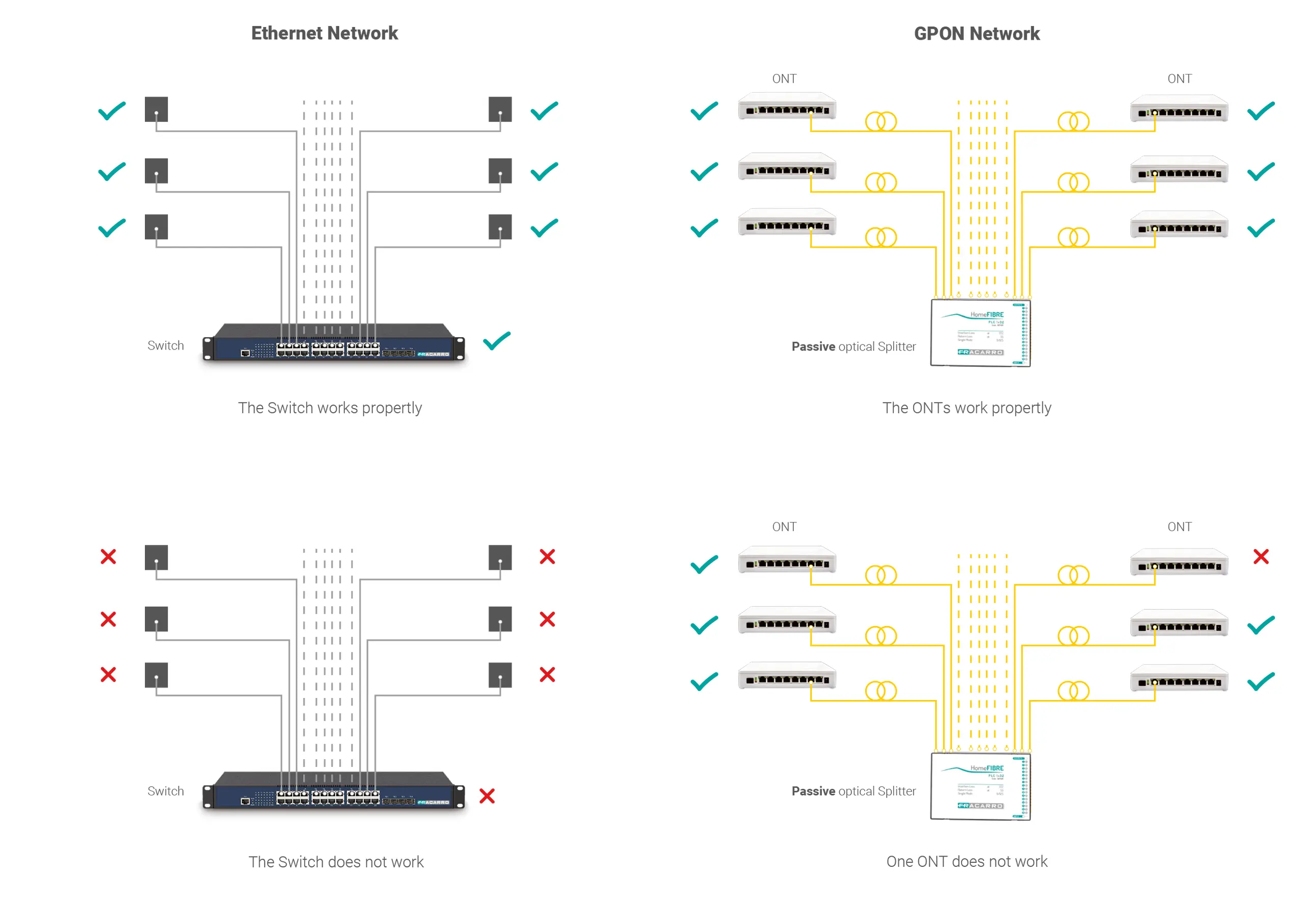The advantages of the passive network
Thanks to the use of passive components, GPON networks guarantee greater reliability and a reduction in maintenance times.

A more reliable system, easy to implement
GPON networks are defined as passive because all the infrastructure between the server room and the room to be served does not need to be powered by the electricity grid. The advantage of this type of configuration consists first of all in the reliability of the system, determined by the drastic reduction of active devices, which by their nature are more subject to malfunctions.
With the GPON structure, not only all the floor racks are eliminated, but also the switches which in traditional-type systems distribute the services to several rooms and which, in the event of a malfunction, can generate disservices to a large area of the building; the passive network, on the other hand, makes it possible to isolate any problems to just the room concerned, preserving the correct functioning of the rest of the system.
The use of passive optical fiber – by its nature immune to any type of interference – makes the GPON solution very reliable also with respect to the protection of the equipment in the event of atmospheric discharges; thanks to this carrier, the GPON solution is also very interesting in terms of system scalability because new service distribution lines can be implemented at any time, even in mixed use with 230 V electric cables.
Simplified maintenance
The GPON passive fiber optic structure is also advantageous as regards the maintenance of the system, first of all because there are fewer devices to keep monitored; in addition, when an ONT device that distributes the services to a room is damaged, when replaced, the configuration takes place automatically from the central OLT machine.
